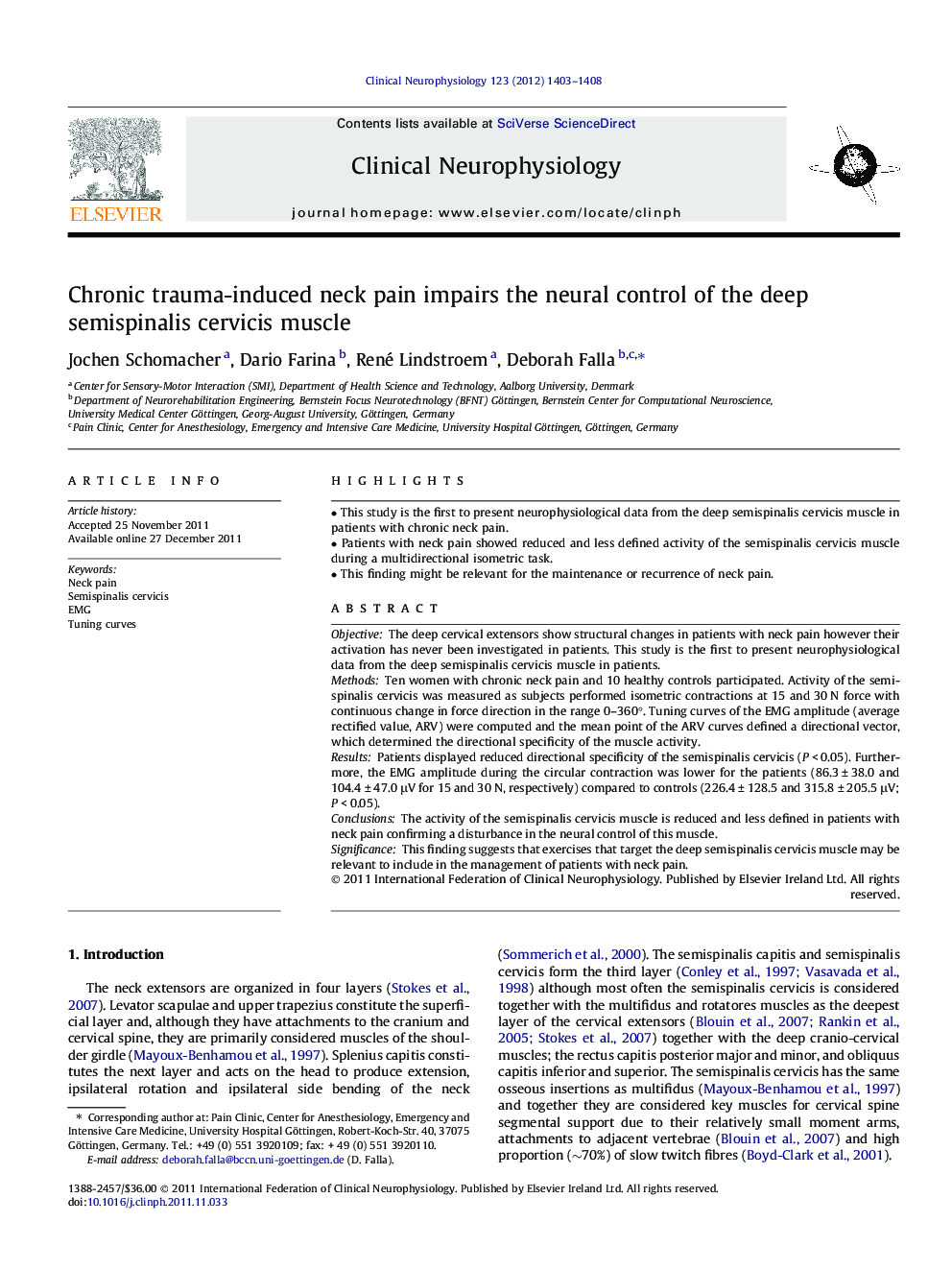| Article ID | Journal | Published Year | Pages | File Type |
|---|---|---|---|---|
| 3045503 | Clinical Neurophysiology | 2012 | 6 Pages |
ObjectiveThe deep cervical extensors show structural changes in patients with neck pain however their activation has never been investigated in patients. This study is the first to present neurophysiological data from the deep semispinalis cervicis muscle in patients.MethodsTen women with chronic neck pain and 10 healthy controls participated. Activity of the semispinalis cervicis was measured as subjects performed isometric contractions at 15 and 30 N force with continuous change in force direction in the range 0–360°. Tuning curves of the EMG amplitude (average rectified value, ARV) were computed and the mean point of the ARV curves defined a directional vector, which determined the directional specificity of the muscle activity.ResultsPatients displayed reduced directional specificity of the semispinalis cervicis (P < 0.05). Furthermore, the EMG amplitude during the circular contraction was lower for the patients (86.3 ± 38.0 and 104.4 ± 47.0 μV for 15 and 30 N, respectively) compared to controls (226.4 ± 128.5 and 315.8 ± 205.5 μV; P < 0.05).ConclusionsThe activity of the semispinalis cervicis muscle is reduced and less defined in patients with neck pain confirming a disturbance in the neural control of this muscle.SignificanceThis finding suggests that exercises that target the deep semispinalis cervicis muscle may be relevant to include in the management of patients with neck pain.
► This study is the first to present neurophysiological data from the deep semispinalis cervicis muscle in patients with chronic neck pain. ► Patients with neck pain showed reduced and less defined activity of the semispinalis cervicis muscle during a multidirectional isometric task. ► This finding might be relevant for the maintenance or recurrence of neck pain.
